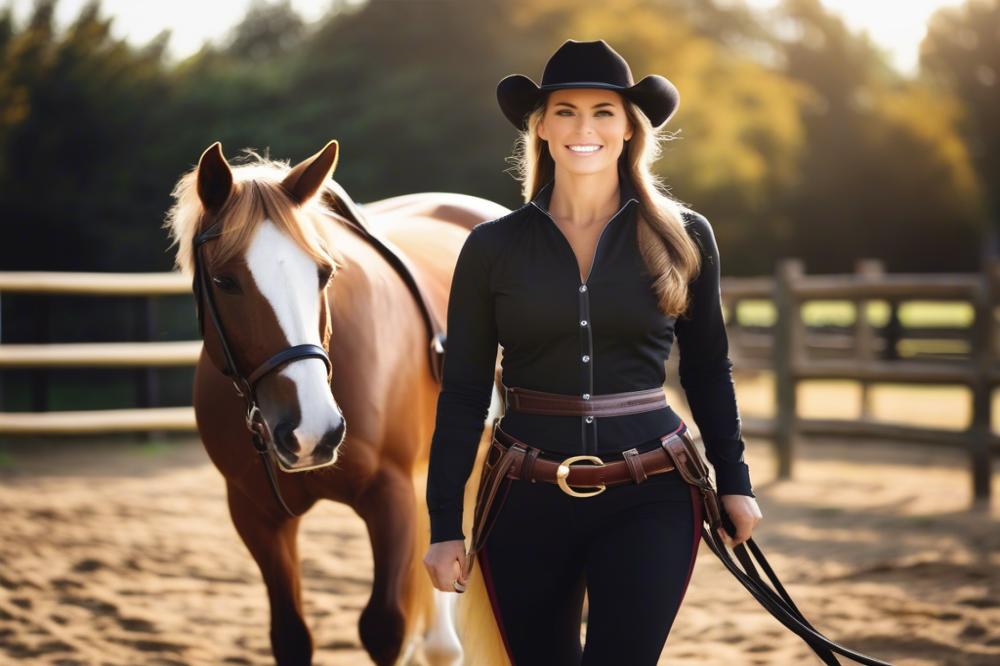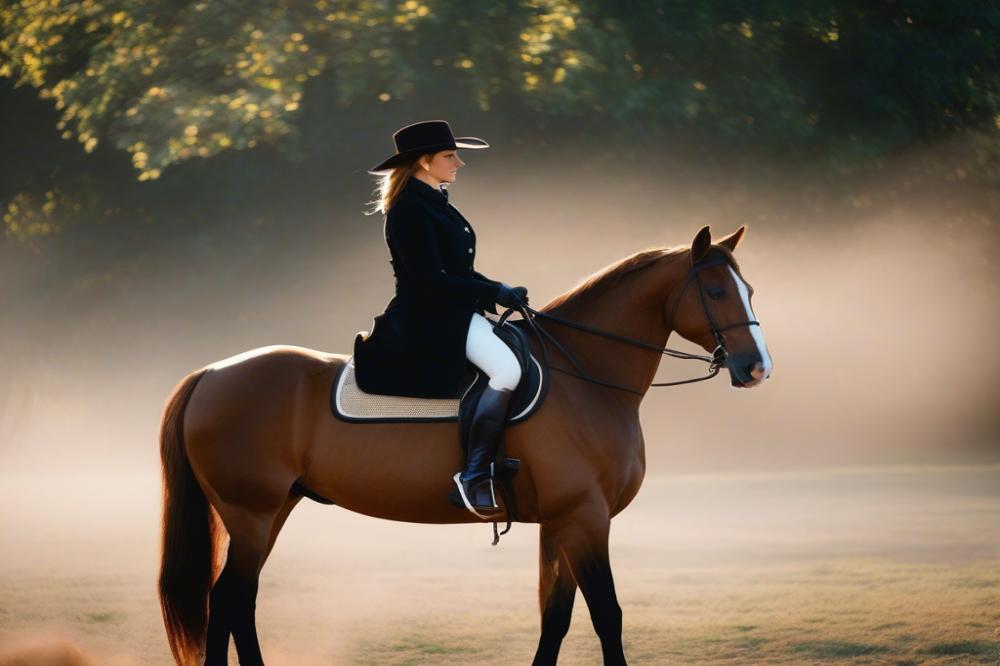Understanding How Often to Ride Your Horse
When it comes to the age-old question of how often one should ride a horse, many factors come into play. Riding a horse isn’t just about hopping on for a quick jaunt around the fields; it’s an important element of horse training, horse health, and overall equine care. Think of it as a balancing act. You want to ensure your horse gets enough exercise to stay fit and happy, but you also don’t want to overdo it. After all, no one enjoys being pushed too hard, right? Just like us, horses need their time to relax and recharge.
Imagine a horse’s routine as a complex recipe where every ingredient counts. How often a horse should be ridden can depend on various aspects: the horse’s age, breed, and even its temperament. For instance, a spirited Tennessee Walker may delight in daily rides, while a Quarter Horse might appreciate a more laid-back routine. Those two breeds show us just how different riding schedules can be.
Horse exercise routines vary widely. Some horses thrive on regular activity, while others might be more suited to a relaxed pace. Taking notes on how your horse responds during and after rides can be a helpful way to tailor the perfect riding schedule. This approach not only benefits their health but strengthens the bond between rider and horse. Riding isn’t just an activity; it’s a partnership.
A wise horse owner knows that communication is key. It’s like having a conversation with your horse where you’re both trying to figure out how to work together. If you notice your horse seems tired or disinterested, adjusting your riding frequency might be in order. Remember that even the best war horse breed needs rest. So, instead of loading your horse up with back-to-back rides, consider mixing in some days off to allow for recovery.
In a nutshell, recognizing the right balance in your riding frequency is essential. It reflects not only on your horse’s well-being but on how much joy both of you can find in those rides. So, let’s dig deeper into the factors that influence riding frequency, and soon you’ll be equipped with the knowledge to decide what works best for you and your equine friend.
Factors Influencing Horse Riding Frequency

Several factors play a role when deciding how often to ride your horse. First up is a horse’s age and fitness level. Younger horses often have boundless energy, making them eager for action. However, an older equine buddy might need more gentle exercise and frequent rest. Fitness levels matter just as much. Horses in top shape can handle more rides without fatigue, while those less fit require gradual buildup in their exercise routines.
The experience level and goals of the rider also come into play. A beginner may want to ride more often to build confidence and skill. They might feel excited to learn all the basics. On the other hand, experienced riders often have specific goals. They might aim for competitions or advanced horse training. Sometimes, this leads to more focused riding sessions rather than sheer numbers. Balancing time spent in the saddle with learning is key.
Another important aspect is the type of riding done. For instance, trail riding and leisure outings allow for more relaxed routines. These rides can be longer and less intense, which is delightful for both horse and rider. However, disciplines like dressage or jumping can require more frequent and structured practice. These activities help maintain the horse’s skills and ensure they stay sharp. The importance of regular horse exercise routines cannot be shrugged off, especially in competitive settings.
Lastly, seasonal considerations and climate are crucial. A sunny day in spring may call for longer rides, while a hot summer could necessitate shorter sessions. Overdoing it in high heat can harm a horse’s health. In winter, chilly temps mean extra care. Horses can be ridden less frequently but in meaningful ways, perhaps focusing on groundwork or light exercise to keep them active. Weather indeed has a way of dictating schedules.
General Guidelines for Riding Frequency

Recommended Riding Frequency for Different Horse Types
When it comes to how often to ride, the type of horse plays a big role. For example, young horses in training usually need to be ridden more frequently, around five to six times a week. This helps their muscles develop and gets them used to being worked. Older horses, especially those with prior injuries, might do better with three to four rides a week. Balance is crucial here. You wouldn’t want to push a horse too hard or too soon; after all, their health and well-being come first.
Horses with a more laid-back personality can handle a different schedule. They might be fine with just a couple of rides weekly while enjoying relaxed grooming sessions in between. Remember, every horse has its own personality, much like people!
Balancing Work and Rest for Optimal Performance
Just like any athlete, horses need time to recover. Overworking them can lead to burnout or injuries. Imagine working out every day without a break. You’d be worn out, right? A smart approach would be to mix up the riding routine with days for light exercise and rest. On days off, consider keeping them active with gentle walks or turnouts in a paddock.
Integrating variety into horse exercise routines can also help. Switching between longer trail rides and short, intense training sessions keeps things fresh and exciting. Don’t forget about mental stimulation; sometimes, a change of scenery can work wonders for a horse’s mood.
Importance of Consistency in Riding
Consistency is key in horse riding, much like routine is vital for kids in school. Many professionals suggest that regular riding really helps with equine fitness. A well-scheduled riding routine helps a horse learn and build muscle memory. This improves their response to cues and tasks.
Riding consistently also helps form a stronger bond between a horse and rider. When they know what to expect, it builds trust. Noticing how a horse reacts to your cues can be heartwarming. Some days might be better than others, and that’s okay. Just like humans, horses have off days too. Listen to your horse. If they seem tired or uninterested, it might be time for a relaxed day together instead of more structured training.
So remember, finding that sweet spot of riding frequency is all about knowing your horse, being consistent, and balancing their workload with proper rest. It can make all the difference in their health and riding experience.
Signs Your Horse Needs More or Less Riding

Understanding your horse’s needs can be tricky at times. Looking for clear signs can help guide your decisions. Behavioral indicators often provide the first clues. If your horse is extra energetic, bucking, or playfully running around the paddock, it might crave more riding. On the flip side, if your steed appears sluggish or reluctant to go forward, there could be two possibilities: they’re either overworked or just not in the mood.
Physical signs also play a big role in gauging your horse’s activity level. Fatigue often shows as a decreased heart rate after exercise. If your horse pants heavily or stands around looking disinterested after a ride, it’s time to rethink those horse exercise routines. Conversely, observing bright eyes or a lively step could indicate that your horse is ready for a more intensive training schedule. Keep an eye on their body language.
Adjusting the frequency of riding can depend on various factors, including performance and overall horse health. Note any changes in mood or energy after exercises. An excited, prancing horse is usually itching to hit the trails or jump those fences. But if your equine buddy seems tired or sore after workouts, less riding may be the solution. Also, factors such as age and fitness level should guide how often you mount up.
Take your horse’s personality into account too. Some horses thrive on routine, while others feel stifled. You might find that a unique approach, like mixing in ground work or taking time off in between rides, can keep the relationship fresh. After all, tailoring your horse training to fit their specific needs can enhance both fitness and enjoyment.
Creating a Riding Schedule
Building a riding schedule for your horse is essential. It’s like creating a workout plan for any athlete. Different horses and riders have unique needs. Factors like age, fitness level, and temperament all play a role. Some horses thrive on a routine; others enjoy a bit of spontaneity. Think of it as balancing schoolwork with free time. You want to make it productive yet fun!
First, let’s consider what your week might look like. Many riders aim for two to four sessions per week. It allows for consistent horse training without overwhelming either party. However, don’t forget about the horse’s fitness. Riding frequently helps build stamina and strengthens muscles. Plan lighter days for exercise routines focused more on relaxation, like trail riding. Those days can be refreshing for both you and your equine partner.
If you look at the month ahead, you might notice patterns. Perhaps you can ride more during weekends or free days. Scheduling a mix of lessons, hacks, and groundwork keeps everything interesting. Variety prevents boredom and encourages horse health. Think of it like mixing up a recipe; a pinch of this and a tad of that can make all the difference.
Diversifying activities is another point worth mentioning. Jumping one day, dressage another, and maybe some galloping on the trails can keep engagement high. Add in some groundwork for maintaining connection too. Lessons could focus on specific skills or just enjoying a relaxed ride. Each session doesn’t have to be a marathon to be effective. Mixing it up is key to motivation for both you and your horse.
Your riding schedule should not become a chore. Ease into a routine that feels right for you both. Talk to your trainer too; they might have suggestions tailored just for you. Occasionally, life gets in the way. Don’t stress; flexibility in your plan is also important. Listening to how your horse feels is vital. Sometimes you need to ride a bit less, and sometimes more, depending on the individual needs.
The Role of Ground Work and Other Activities
Ground work plays a vital role in the development of a horse. It’s the foundation that sets the tone for everything that comes after. Imagine teaching a child to walk before asking them to run. That principle applies here too. By engaging in ground work, you teach your horse to respect you and understand basic commands. This offers great support when you eventually climb into the saddle.
Horse training doesn’t always take place from the saddle. There are many alternative activities you can do with your horse that can be just as beneficial. Consider activities like lunging, long lining, or just walking them in hand. Those moments create a bond and help build trust, which is crucial. Remember, not every session needs to be about riding. Why not take some time to play games, such as leading them over obstacles or practicing their flexibility? It keeps things interesting and fun!
Have you ever noticed how groundwork impacts a horse’s performance under saddle? When a horse understands body language, they can respond better when ridden. Their attention is sharper, and their movements are more fluid. This increase in equine fitness carries over to riding, showing up in their energetic strides and willing attitude. In essence, groundwork serves as a bridge to a higher level of horse health and effective horse exercise routines.
Furthermore, routine isn’t just about getting in the saddle every day. Think about mixing it up with a variety of activities. Trail walks, for instance, can introduce new sights and sounds. These experiences help curb boredom for both horse and rider. When you explore together, you’re enhancing that special bond. You might even get some laughs when your horse sidesteps a silly squirrel!
Always keep in mind that balance is key. Both riding and groundwork should coexist harmoniously in your routine. Each one complements the other beautifully. Groundwork builds confidence and can turn a tense horse into a relaxed partner. Regularly engaging in these diverse activities can lead to amazing results. This mix might just be the recipe for success in your equine journey.
Common Mistakes in Riding Frequency
Overriding vs. Under-riding
It’s easy to get caught up in the excitement of horse riding. Sometimes, eager riders jump on their horses every single day. While regular exercise is important, riding too much can lead to burnout for both horse and rider. Think about it: even top athletes need rest days to recover. On the flip side, some riders might get busy and forget to ride their horses for days or weeks at a time. This under-riding can cause horses to lose muscle and agility. Keeping an eye on equine fitness is crucial for maintaining a good balance in your horse’s exercise routines.
Ignoring the Horse’s Cues
Horses can’t verbally say how they feel, but they do communicate with their body language. If your horse seems grumpy or refuses to cooperate, it could mean they are tired or sore. Being attentive to your equine friend’s cues is essential for their health. Maybe they just need a light ride, or perhaps a break for a couple of days. No one likes to push through when they clearly need a pause. A little empathy goes a long way in understanding your horse’s needs during training.
Failing to Adjust Frequency Based on Life Changes
Life changes can affect how often you can ride. If a new job or family responsibility arises, it’s time to reassess your horse riding schedule. Riding sporadically can throw off your horse’s exercise routines. Staying consistent is important, but flexibility is just as key. When things in life shift, consider your horse’s well-being. Board changes or relocation could also impact how often your horse gets worked. Adapting to these circumstances is crucial for keeping up with good equine care. Having a schedule can help, but be sure to reflect on current demands.
Bringing It All Together
When it comes to the question of how often to ride your horse, it’s crucial to remember that there isn’t a one-size-fits-all answer. Just like people, horses have their own unique needs based on age, fitness levels, and personalities. Staying attuned to your horse’s condition is vital for maintaining a healthy and enjoyable riding routine. Think of it as a balancing act. Too little riding can lead to boredom and excess energy, while overdoing it can result in fatigue or injury.
Encouragement to assess individual needs is key. Your horse might thrive on regular long rides, while another might prefer shorter, more varied workouts. It’s all about finding what works best for your friendly four-legged companion. Have you ever seen a horse frolic through a stream or, dare I say, do horses swim? It’s their way of finding joy and staying active. Incorporate different activities into your horse’s routine, like some playful swimming or a fun trail ride. It keeps things interesting for both of you!
In the end, maintaining a healthy horse riding schedule requires a bit of thought and flexibility. A wise rider stays observant; always listening to horse ear language, which tells you so much about what your horse is feeling. Think of your horse as a partner in a dance; the better you both know each other’s moves, the smoother the ride. So, whether you’re galloping across a field or just enjoying some quiet time together, make sure every moment counts. Your horse will appreciate it, and you’ll develop a deeper bond that goes beyond just saddling up.



